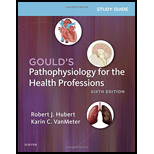
Concept explainers
To explain: The possible effects of immobility on skeletal muscles, bone, and joints.
Concept introduction: Immobility is the lack of movement that may involve only one part of the body. The effect of an inactivity depends on the extent of immobilization and its duration. Bedsores also known as pressure ulcers and decubitus ulcers are the areas of broken skin that will develop in the people who are immobilized for a longer time.
Explanation of Solution
When a person is inactive for long time, there will be a lack of muscular activity. Inactive muscle will lose its strength, mass, and endurance. After few weeks of immobility due to bed rest, almost half of the muscle strength will be lost. Immobilized joints and muscles should be in correct position and there should be reduction of abnormal stress. This is significant when these structures such as joints or immobilized muscles would stretch or shorten, it may result in the abnormal fixation of joint and its biomechanics will be altered. Due to inactivity, tendons and ligaments may shorten and lose their elasticity. Prolonged immobility will cause the replacement of muscle cells by fibrous tissue. This leads to the muscle wasting and weakening. This decreases the flexibility of joints and muscles that will further cause irreversible deformity and loss of function. The reduction in muscle activity impairs the blood circulation in the body that results in the pooling of blood in dependent areas of the body. This leads to the decrease in cardiac output and the development of edema. These may cause dizziness or fainting when there is a change in position.
When a person is inactive for prolonged time, bone will be deteriorated. Bone demineralization occurs due to the lack of weight bearing and muscle action. This will reduce the osteoblastic activity or the formation of bones. However, osteoclastic activity continues. This process leads to the loss of bone mass and osteoporosis with spontaneous fractures, if stress is applied on the bones. Thus, inactivity for prolonged time may lead to osteoporosis.
The breakdown of muscle tissues and bone tissues result in the elevation of serum levels of nitrogen wastes such as elevated serum levels of calcium and creatinine. Higher calcium level in the blood will impede the muscle activity, as it will lead to the loss of muscle tone. Tendons and ligaments will connect the muscles to bone and maintain joint structure. This require movement to maintain their structure and functionality. If a person is immobilized for prolonged time, the connective tissues will be shortened and the density of tissues will be increased. This will limit the flexibility and range of motion.
Want to see more full solutions like this?
Chapter 25 Solutions
EBK STUDY GUIDE FOR GOULD'S PATHOPHYSIO
- overview of the neurological system, cranial nerves and what part of the body it innervatesarrow_forwarddifferentiate structure and function of the peripheral vascular system. what are the normal and abnormal findings of the peripheral arterioles and peripheral venous systemarrow_forwardAn overview of the skin, hair and nails epidermal appendages normal and abnormal findingsarrow_forward
- differentiate the twelve cranial nerves and how to test themarrow_forwardWhat are the nursing interventions for patients with GI problems ? What is the priority ?arrow_forwardAdult Nutrition Assessment Date of consultation: 3/2/25 Reason for Nutrition Assessment: Mrs. Clover was referred to the RD from the ER physician; patient experiencing weight loss, SOB & Edema Nutrition Assessment Data 69 YOF Ht 157 cm, Wt 53 kg. BMI 21.7 Usual wt 55 kg Heart: slight physiologic murmur; lungs: clear; extremities: 3+ edema to bilateral lower legs; elevated BP, abdomen: soft, nontender, active bowel sounds; neurologic: unremarkable; skin: diminished skin tugor. Biochemical Data BUN 72, Creatinine 4.6, Calcium 7.2, Phosphorus 7.3, glucose 105, BNP 720, Albumin 2.0, Na 125, K 3.3, CI 93. Hgb 11.5, Hct 33.2, ALT 29, AST 36, Alkaline phosphatase 120, other relevant labs pending result. Medications Include inhalers, Cymbalta, Neurontin, Seroquel, and topiramate, prilosec, solumedrol, rocephin, zithromax, NaCl 0.45%+50 MEQ sodium bicarbonate @100 ml/hr. No history of herbal supplements. Since her pneumonia diagnosis several days ago, she has felt too weak to prepare meals, she…arrow_forward
- Assuming you are a community health nurse, choose a community of your own and perform practically the following and report your findings: a. Community Assessment b. Community Diagnosisarrow_forwardDescribe practically how you would use a standing order in the diagnosis and treatment of a 10-year-old primary school pupil with a complaint of haematuria at the end of the urine.arrow_forwardSimple explanations, please. B. Why is an accurate diagnosis of malnutrition important? H. Is BMI a food indicator of malnutrition? I. Can an overweight/obese patient develop malnutrition? Why or why not?arrow_forward
- How is the severity of malnutrition determined based off the table? Simple explanation please.arrow_forwardDiscuss on: 1. Peptic Ulcer disease Aetiology 2. Classification of drugs used in the treatment of PUD 3. Triple therapy of PUD 4. Drugs Contraindicated in PUDarrow_forwardCATH LAB FUNDAMENTALS I WORKSHEET #2 Patient #1 NAME: AO 232/112 M CaO2 ml/L LV 232/25 CvO2 ml/L RA M 17 C.O. L/Min RV 61/17 S.V. ml/beat PA 61/25 M C.I. L/Min/M2 PAW M 25 S.I. ml/beat/M2 Hgb 10.3 S.V.R Dynes/sec/cm5 Hct % T.P.R Dynes/sec/cm5 PA Sat 56% P.V.R Dynes/sec/cm5 AO Sat 81% BSA M2 HR 113 BPM 02 Cons. 233 ml/min Ht _5_ft_10_in Wt. _330_lbs Patient#2 AO 78/46 M CaO2 ml/L LV 78/10 CvO2 ml/L RA M---7 C.O. L/Min RV 21/7 S.V. ml/beat PA 21/12 M C.I. L/Min/M2 PAW M- 12- S.I. S.V.R ml/beat/M2 Dynes/sec/cm5 Hct 45%…arrow_forward
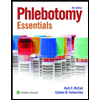 Phlebotomy EssentialsNursingISBN:9781451194524Author:Ruth McCall, Cathee M. Tankersley MT(ASCP)Publisher:JONES+BARTLETT PUBLISHERS, INC.
Phlebotomy EssentialsNursingISBN:9781451194524Author:Ruth McCall, Cathee M. Tankersley MT(ASCP)Publisher:JONES+BARTLETT PUBLISHERS, INC.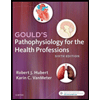 Gould's Pathophysiology for the Health Profession...NursingISBN:9780323414425Author:Robert J Hubert BSPublisher:Saunders
Gould's Pathophysiology for the Health Profession...NursingISBN:9780323414425Author:Robert J Hubert BSPublisher:Saunders Fundamentals Of NursingNursingISBN:9781496362179Author:Taylor, Carol (carol R.), LYNN, Pamela (pamela Barbara), Bartlett, Jennifer L.Publisher:Wolters Kluwer,
Fundamentals Of NursingNursingISBN:9781496362179Author:Taylor, Carol (carol R.), LYNN, Pamela (pamela Barbara), Bartlett, Jennifer L.Publisher:Wolters Kluwer,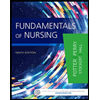 Fundamentals of Nursing, 9eNursingISBN:9780323327404Author:Patricia A. Potter RN MSN PhD FAAN, Anne Griffin Perry RN EdD FAAN, Patricia Stockert RN BSN MS PhD, Amy Hall RN BSN MS PhD CNEPublisher:Elsevier Science
Fundamentals of Nursing, 9eNursingISBN:9780323327404Author:Patricia A. Potter RN MSN PhD FAAN, Anne Griffin Perry RN EdD FAAN, Patricia Stockert RN BSN MS PhD, Amy Hall RN BSN MS PhD CNEPublisher:Elsevier Science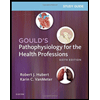 Study Guide for Gould's Pathophysiology for the H...NursingISBN:9780323414142Author:Hubert BS, Robert J; VanMeter PhD, Karin C.Publisher:Saunders
Study Guide for Gould's Pathophysiology for the H...NursingISBN:9780323414142Author:Hubert BS, Robert J; VanMeter PhD, Karin C.Publisher:Saunders Issues and Ethics in the Helping Professions (Min...NursingISBN:9781337406291Author:Gerald Corey, Marianne Schneider Corey, Cindy CoreyPublisher:Cengage Learning
Issues and Ethics in the Helping Professions (Min...NursingISBN:9781337406291Author:Gerald Corey, Marianne Schneider Corey, Cindy CoreyPublisher:Cengage Learning





